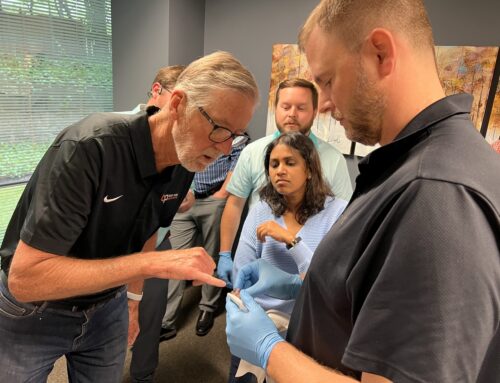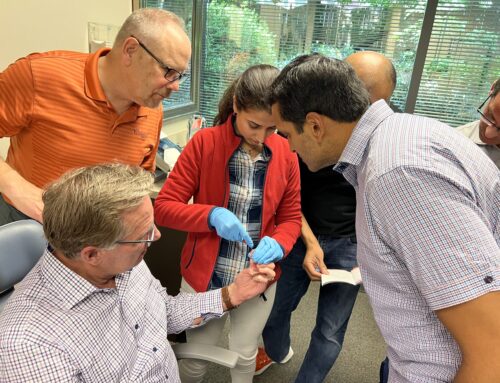As dentists, hygienists, front office staff, or any other position within the dental office, it is important to be there for our patients. And, after getting diagnosed with sleep apnea, our patients might be confused or concerned, while not quite knowing how to handle that news just yet.
To a patient, suffering from sleep apnea is like someone is robbing them of rest and destroying their health. Everyone needs sleep in order to stay healthy and happy. Luckily, there are effective treatment options for sleep apnea along with helpful tips you can provide your patients to help make their path to recovery an easier one. Let’s take a look:
Proper Position of the Mouth
Once a diagnosis has been made, this is where your office comes in. One option for sleep apnea treatment is oral appliance therapy. By creating a custom oral appliance, you can help keep your patient’s jaw in a proper position. While they might not work for everyone, they do work for many people who find them to be easy to use and successful in treating their sleep apnea—it helps to keep the air passageways wide open and clear by stabilizing the throat and holding it in the proper position.
Remember to Eat Well
Another tip is to eat well. Remind your patients that eating well and maintaining a proper weight can significantly help control their sleep apnea. As you might know, one of the main factors contributing to sleep apnea is being overweight, which is caused by poor eating habits. It has been proven that poor nutrition and diets can contribute to the severity of sleep apnea. So, get your patients to change their eating patterns for improved results!
Sleep on Their Side
Tell your patients to try to sleep on their side. Many people that are afflicted with sleep apnea rest on their backs. By sleeping on their back, it can cause constriction of the throat muscles. Side-sleeping can improve a person’s breathing because it helps to open the airways rather than allowing your tongue to fall to the back of your through like when sleeping on their back. And, if it might be difficult for your patients to sleep on their sides, tell them to try placing a tennis ball in their back pocket or propping pillows around themselves to prevent moving to their back.
It is important to help your patients understand their diagnosis—it may not always be so easy to understand. By giving them some simple tips, you can be helping them receive improved rest relief from their sleep apnea symptoms.
For more information on sleep apnea and tips you can provide your patients, please contact my office or attend one of our lectures. The more you understand sleep apnea, the better you can treat your patients!





